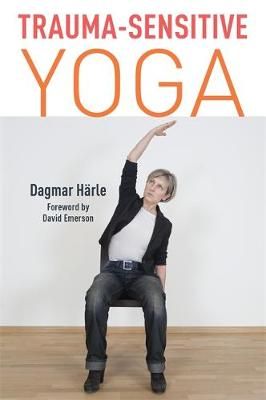
Trauma-Sensitive Yoga
- Author: Harle, Dagmar
- Translator: Grimm, Christine M.
Book
$35.75Contents
- Acknowledgements.
- Foreword by David Emerson. Introduction. Part One. West - Psychotraumatology.
- 1. The Event.
- 2. The Impact.
- 2.1. Post-traumatic Stress Disorder (PTSD).
- 2.2. Complex Post-traumatic Stress Disorders, Attachment Trauma, and Developmental Trauma.
- 2.3. Dissociation.
- 3. Why Doesn't It Stop When It's Over?
- 3.1. The Hierarchy of Information Processing.
- 3.2. How Can Traumatic Experiences Be Integrated.
- 3.3. How Do We Reach the Subcortical Brain Structures?
- 3. 4 Polyvagal Theory.
- 3.5. Top Down Versus Bottom Up.
- 3.6. The Inner World of the Body - The Sixth Sense.
- 4. What to Do?
- 4.1. Stabilization or Exposure Therapy?
- 4.2. First Develop a Good Relationship?
- 4.3. The Third Space. Part Two. East - Yoga: The Connection Between Body and Spirit.
- 5. Yoga is More than Asanas.
- 5.1. History and Principles.
- 5.2. The Paths to Liberation.
- 5.3. The Eightfold Path of Raja Yoga.
- 6. "Work In" - Hatha Yoga.
- 7. The Tools of a Yogi.
- 7.1. Asana.
- 7.2. Pranayama.
- 7.3. Mindfulness. Part Three. West Studies East: Research.
- 8. Yoga Helps!
- 8.1. Yoga Influences Neurotransmitters.
- 8.2. Does Yoga Help Trauma Clients?
- 8.3. Does Yoga Replace Trauma Therapy?
- 9. Which Components of Yoga are Effective?
- 9.1. The Rhythm Does It.
- 9.2. The Breath Does It.
- 9.3. Asanas or Pranayama?
- 9.4. Mindfulness as an Effect Factor.
- 9.5. Summary and Conclusions. Part Four. How Does Yoga Become Part Of Trauma Therapy?
- 10. The Method.
- 10.1. Basic Preconditions for Trauma Therapy.
- 10.2. Principles for a Body-Oriented Approach.
- 11. Possible Practice Settings.
- 11.1. Trauma-Sensitive Yoga in the Group.
- 11.2. TSY at the Beginning and/or End of a Therapy Session.
- 11.3. Planning and Developing a Yoga Program.
- 11.4. Incorporating TSY into the Trauma Therapy.
- 11.5. Planning the Therapy.
- 12. Guidance for Instructors.
- 12.1. Tone of Voice.
- 12.2. Pace and Timing of Speech.
- 12.3. Processing of Instructions.
- 12.4. Staying in Contact.
- 12.5. Keeping the Focus on the Body.
- 12.6. Emphasis on Choices and Freedom in Decision-making.
- 12.7. Corrections.
- 12.8. The Language of Empowerment.
- 12.9. Wavelike Instruction and Breaks.
- 12.10. Relationshop and Mirroring.
- 12.11. Interoceptive Language. Part Five. Practice.
- 13. Asanas.
- 13.1. Seated Poses.
- 13.2. Standing Poses.
- 14. Breathing.
- 14.1. Breating in Anatomical Terms.
- 14.2. Breathing in Practical Terms.
- 14.3. Goals of Breath Control.
- 14.4. Pranayama Practice.
- 14.5. How Do I Introduce Working with the Breath?
- 14.6. Pranayama Exercices.
- 15. Mindfulness.
- 15.1. Effective Factors.
- 15.2. Goals of Mindfulness Practice.
- 15.3. Being Non-Judgemental.
- 15.4. What Does Non-Mindfulness Actually Look Like? Part Six. Achieving Therapeutic Goals with Trauma Sensitive Yoga.
- 16. Overview of Therapy Goals and Trauma-Sensitive Yoga.
- 17. Psychoeducation.
- 18. Practice and Case Examples.
- 18.1. Building Resources.
- 18.2. Affect Regulation and Control.
- 18.3. Learning Differentiation.
- 18.4. Flexibility in Posture and Movement.
- 18.5. Impulses and Interrupted Defensive Movement.
- 18.6. Relaxation.
- 18.7. Exposure and Habituation in Body-oriented Therapy.
- 18.8. Relationship on an Equal Basis.
- 18.9. Dissociation and Flashback: Here-and-Now Experiences.
- 18.10. Changing Concepts of the Self: Empowerment and Self-Esteem.
- 18.11. Reducing States of Tension in the Body. Concluding Thoughts. Appendices. Bibliography. Index.


